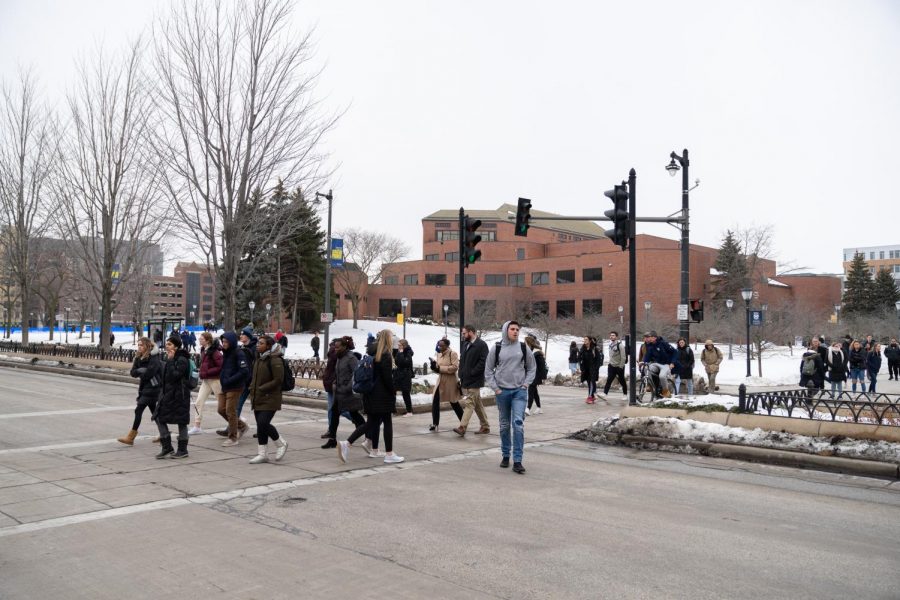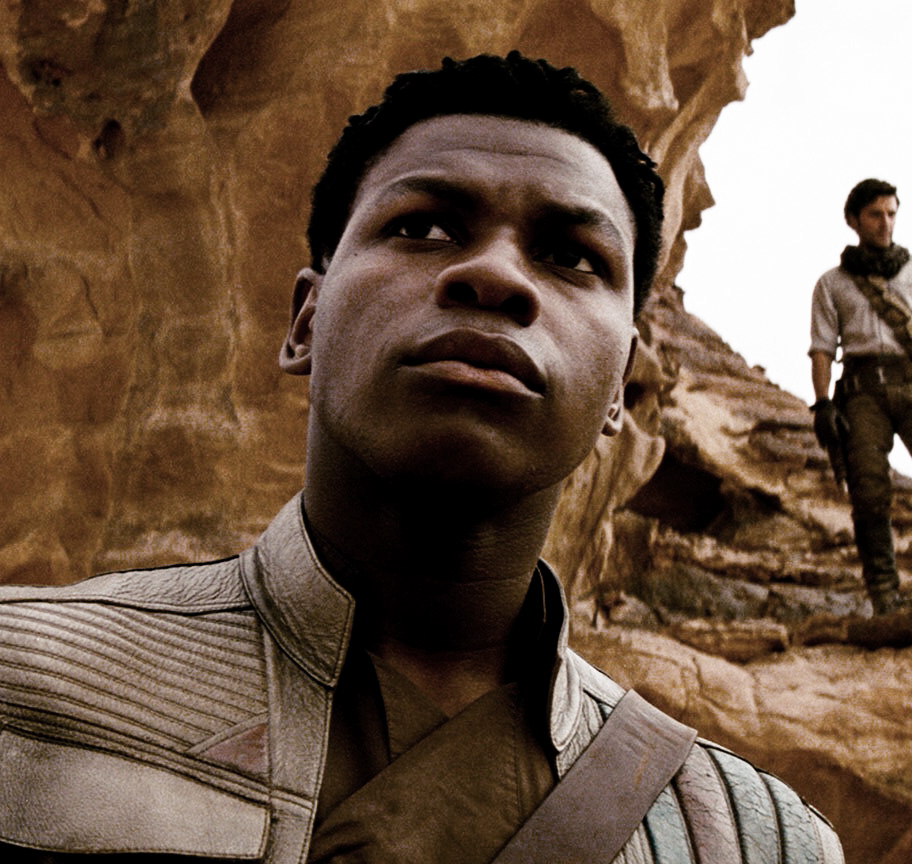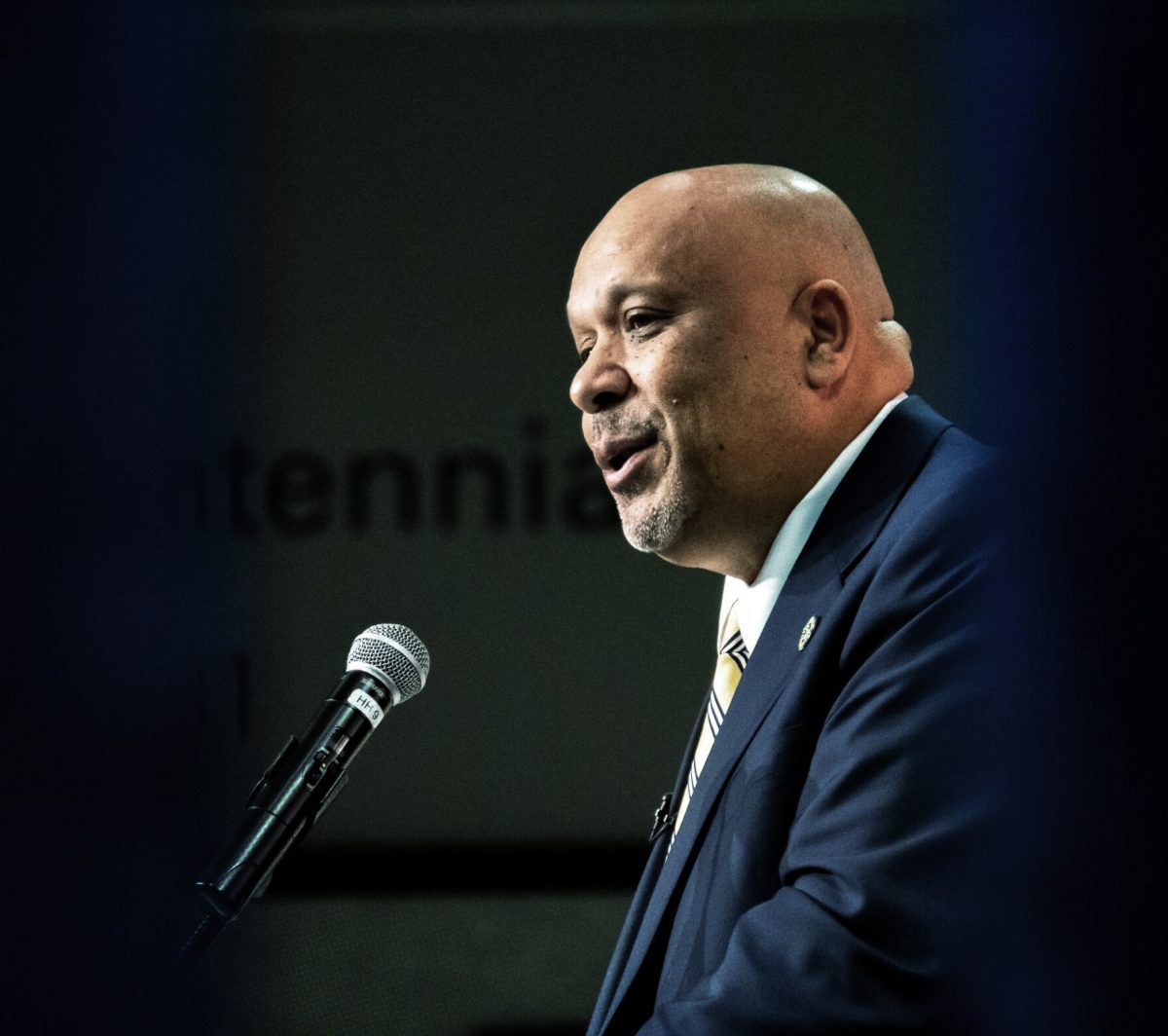
Krystal Morales from Dorado, Puerto Rico debated between attending George Washington University and Marquette University. With hopes to work in political digital media, Morales knew both schools would provide the experiences she needed for her career.
George Washington offered a consolidated political communications degree that Marquette does not have, as well as a campus in the nation’s capital, where Morales intends to start a career. Still, Morales chose Marquette.
“It really came down to the people,” she said. “Back at GW, it was ‘You’re accepted, and we’ll see you here if you want to come.’ At Marquette it was, ‘You’re accepted; come and see what we have to offer.’ It was like they really wanted me on campus.”
Carlos Garces, senior assistant dean of admissions, met with Morales at least three times during her college search process. He answered questions for Morales about student involvement and informed her of Marquette’s Les Aspin program in D.C., which Morales said played a major role in her enrollment decision.
As a recruitment officer for Marquette who works to bring students to Marquette from Puerto Rico, Garces said the university takes an active role in recruiting around the country because it helps to provide a geographic diversity to the university that is valuable educationally.
“We want to have a diverse student body,” he said. “When you look at Puerto Rico, you get both geographic and ethnic diversity. They bring a whole different culture and a whole different perspective to the university, which is nice for all people to be exposed to.”
On top of college fairs and personal meetings, Garces also organized a Skype session in January for the past three years between current Puerto Rican Marquette students and prospective students.
Morales said that event was her deciding factor to attend Marquette.
“I felt like that was really outreaching toward me,” Morales said. “GW never did anything like that.”
Demographic breakdown
Morales’ story accompanies about 2,000 others’ about entering Marquette’s class of 2017. Morales is one of 16 Puerto Rican freshmen beginning their college career at Marquette this year, making her part of the 13 percent of incoming freshmen who did not apply from the Midwest.
Click here to read how students around the country found their way onto Marquette’s campus.
Official demographic information on the incoming class is expected to be released by Marquette’s Office of Institutional Research and Assessment in October; however, the admissions office provided preliminary data.
According to Jeff Lochowicz, senior assistant dean of admissions, about 25,000 students applied to Marquette to enter in the fall of 2013. The Institute of Education Sciences reports that Marquette’s acceptance rate is about 55 percent, and about 15 percent of students admitted to Marquette enroll.
A majority of these applicants come from the Great Lakes region, specifically from Wisconsin and Illinois. This is reflected in the preliminary data regarding the freshman class’ state of origin. About 40 percent of the class of 2017 applied in Illinois and another 33 percent applied in Wisconsin.
Overall, about 87 percent of the freshman class comes from the Midwest.
Lochowicz said the admissions office has about 20 recruiters who travel to recruit students from around the country and the world, each targeting specific areas.
“We’ll visit a handful of high schools here and there and go to college fairs, but there’s an emphasis on one-on-one meetings,” Lochowicz said. “That gives us a chance to meet with the parents, who are very influential in the decision-making process to come to Marquette.”
Lochowicz said Marquette does not generally provide extra financial incentives for students outside of its primary Midwestern market.
“We don’t really have quotas by territory or anything of that nature,” Lochowicz said. “We are looking for academically talented and promising students from across the country.”
Marquette compared to other Catholic schools
Marquette’s demographic profile generally looks similar to other private, Catholic schools in the Midwest; however, Marquette does have proportionally more men.
The Institute of Education Sciences reports that Marquette’s overall female population stands at 52 percent. The incoming freshman class is about 53 percent female.
Comparatively, the Institute of Education Sciences reports that Loyola University in Chicago is 63 percent female and St. Xavier University in Chicago is 68 percent female.
Lochowicz also noted that the breadth of options offered by a university for career choices affect the proportions of gender enrolled.
“Engineering is heavily male and nursing is heavily female,” Lochowicz noted. “For an institution of our size and with our offerings, we’re just about where we should be, and that’s about half female.”
The size of Marquette’s ethnic minority population is also similar to its fellow Jesuit institutions in the Midwest. Marquette’s incoming freshman class is about 75 percent white, similar to the demographic found at Creighton, Notre Dame and John Carroll.
Lochowicz suggested that an examination of Marquette’s diversity requires local considerations.
“Compared to, say, a Southern college, we are not diverse at all,” Lochowicz said. “But compared to other upper-Midwest campuses, we actually have a very high diversity rate on campus.”
Marquette does have a smaller ethnic population than Catholic schools in Chicago, though. DePaul and St. Xavier have white populations of about 56 and 54 percent of their student bodies, respectively. Loyola is about 63 percent white.
An increase in ethnic minorities at Marquette
Marquette has recently seen a substantial jump in its ethnic minorities. In 2008, ethnic minorities took up about 15 percent of the incoming freshman population. The freshmen entering Marquette this fall is about 25 percent ethnic minority.
Dan Hamrin, assistant dean of admissions, said there is no one main factor in the rise of ethnic minorities, but the admissions office has taken initiatives to introduce Marquette to underrepresented students.
For example, the Summer Leadership Institute brings high school students who would be the first in their family to go to college to experience a Jesuit education. Marquette also works with MPS schools to conduct sessions on college application essay writing.
“The philosophy of the admissions office at Marquette has always been to promote Marquette and to educate students about the application process in general,” Hamrin said in an email. “We have found that families appreciate this approach.”
Lochowicz also cited Marquette’s three-year partnership with the Boys and Girls Clubs of America, a national organization which stresses community service, as a major contributor to the rise in ethnic minorities.
“Our partnership with them has been tremendous because we are now exposed to a variety of students who may not have even considered Marquette,” he said.
Marquette offers two full-tuition scholarships to members of Milwaukee-Area Boys and Girls Clubs and up to three additional awards for members of the Boys and Girls Clubs nationwide.
Diversity and education
Lochowicz said the efforts to introduce Marquette to underrepresented students will continue, but they apply to demographics other than just race.
“We are certainly aware of ethnic populations that we would like to draw more to the university,” he said. “That’s part of being a diverse campus, but it also includes other things like financial diversity and where students have gone to school, such as public versus private.”
Lochowicz said the efforts to achieve this diversity are beneficial educationally.
“For as many people who are like you in class, it’s nice to have just as many people who aren’t, who have different backgrounds, beliefs and attitudes,” he said. “Universities are supposed to be constructive as safe places to have critique and dialogue, to disagree with people, and to listen. That’s a good interplay.”






